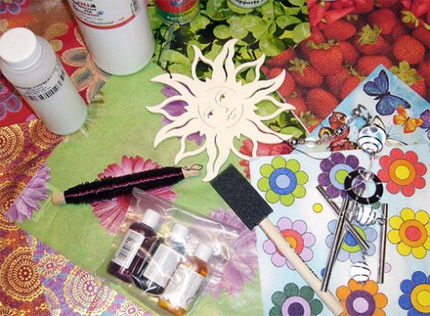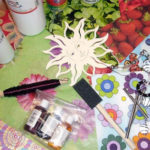:
The study conducted by Côté Clients and DiaMart for the professional union Créaplus reveals that the market for artistic manual activities is not what is often perceived. Far from being marginal, it actually includes a significant number of regular consumers, reaching 33% of the French population, showing a potential that only needs more stimulation to grow even further.

It is, on the contrary, a large homogeneous market, not fragmented into niches, where the pursuit of excellence and competition are almost absent. Today, not only do one-third of the French engage regularly in artistic manual activities at least once a quarter, but moreover, these practitioners engage in an average of 2.4 activities, without distinguishing one activity’s nobility over another. On the contrary, there are real bridges in practicing the activities. The creative leisure market could expand by 50%. Practitioners often already in contact with other activities represent real vectors of development. Thus, activities related to thread, which still lead the market, along with creative card-making, have the greatest growth potential.
Key Figures: The creative leisure market can grow by 50%
– 33% of the French regularly practice an artistic manual activity.
This is revealed by a study recently made public by the professional union Créaplus, which shows that although this market is benefitting from harmonious and controlled democratization, it could still grow in volume by 50%. This would place it at a level of around 1.25 billion euros in France. Enough to satisfy current professional players and those many who are looking for business creation solutions. All artistic manual activities are presented: fine arts, creative leisure, art framing, image, card-making, textile arts, sewing machines, etc.
Contrary to the daily reality of regular practitioners, the introductory path for potential practitioners often takes place alone. Today’s non-buyers remain resistant to the very idea of making purchases on the Internet, preferring to go to stores.
However, currently, stores would not offer good conditions for action. Despite the emergence of the two chains Cultura and Loisirs & Création, which stand out clearly in the specialized distribution landscape, the market is dominated by a multitude of small local specialists. Rare are the points of sale that meet the consumers’ ideal store. Initiatives do not nevertheless lift the main barriers, even if customers perceive noteworthy indicators of evolution in the creative leisure market, such as genuine evolutions in the offer, a democratization that often leads to vulgarization (especially in large specialized stores), and a perception of high cost that remains the primary brake on practicing a new activity, within a sector with a poor image/price perception.
Towards the ideal store
Among the components of the ideal store are price, choice, navigation, and adaptation at all levels of practice. To open up the market, recalls institute Côté Clients, it is necessary to democratize it to meet client expectations, and especially to develop it. The study highlights the evolution of certain markets that have benefited from this openness: notably those of sports and DIY.
In which one can be both competitively priced and competent, or competitively priced and stimulating. While in some, vulgarization is too often diminishing. In short, there needs to be a store that is physically and competitively accessible, without vulgarization. It must facilitate autonomy through advice and support in undertaking projects and reconcile brand valorization with offer visibility. The store should also encourage discovery through continuous movement and novelty.
The website, for its part, could play a role in activating and supporting passion. Democratizing creative leisure without vulgarizing it.
In conclusion, this study pushes to consider that the market for artistic manual activities holds real potential, even though it is still closed today. Far from being marginal, it only needs stimulation. The aim is not so much innovation or reinvention as opening up and democratization. The example of other points of sale (such as DIY stores) would be an extraordinary source of inspiration for this sector, whose clients simply expect professional players to offer what they have grown accustomed to finding at their favorite outlets. It is entirely possible to democratize this market and maintain a high level of competence within it.
For this, two unavoidable levers need to be employed: the intelligence of ranges and merchandising. There are opportunities to be seized.
source: Study conducted by Côté Clients and DiaMart for the Créaplus association.



